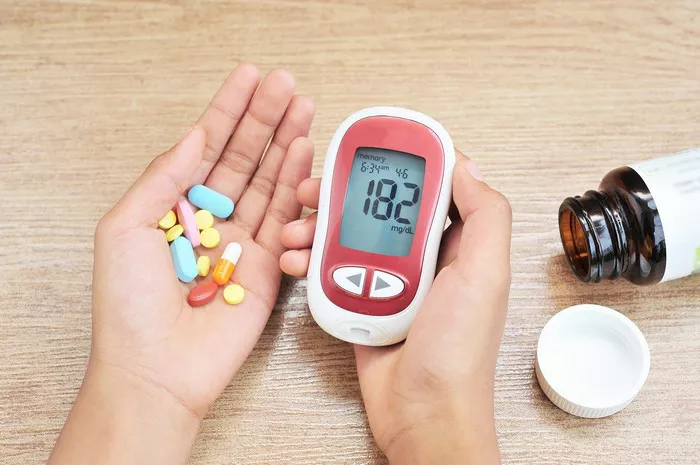Diabetes is a chronic metabolic disorder characterized by elevated blood sugar levels resulting from either insufficient insulin production, resistance to insulin action, or a combination of both. With its prevalence steadily rising worldwide, diabetes has emerged as a significant public health concern, necessitating comprehensive understanding, early detection, and effective management strategies. Broadly classified into two main types, type 1 and type 2 diabetes exhibit distinct etiologies, pathophysiological mechanisms, and clinical presentations. This article aims to elucidate the key differences between these two types of diabetes, highlighting their epidemiology, risk factors, diagnostic criteria, management approaches, and potential complications.
Type 1 Diabetes: Unraveling the Autoimmune Puzzle
Type 1 diabetes, formerly known as insulin-dependent or juvenile-onset diabetes, is characterized by autoimmune destruction of pancreatic beta cells, leading to absolute insulin deficiency. While the exact triggers of the autoimmune response remain elusive, genetic susceptibility, environmental factors, and viral infections are believed to play significant roles in predisposing individuals to type 1 diabetes. The autoimmune process typically begins months to years before clinical symptoms manifest, culminating in overt diabetes when approximately 80-90% of beta cell function is lost.
Epidemiology and Incidence: Type 1 diabetes accounts for approximately 5-10% of all diagnosed cases of diabetes worldwide, with the highest incidence observed in children, adolescents, and young adults. While type 1 diabetes was historically considered predominantly a pediatric condition, emerging evidence suggests an increasing prevalence in older age groups, challenging traditional notions of age-related susceptibility.
Clinical Presentation: The onset of type 1 diabetes is often abrupt, characterized by polyuria (excessive urination), polydipsia (excessive thirst), polyphagia (excessive hunger), unexplained weight loss, fatigue, and blurred vision. Individuals with type 1 diabetes are prone to developing diabetic ketoacidosis (DKA), a life-threatening complication characterized by hyperglycemia, ketosis, and metabolic acidosis. Prompt diagnosis and initiation of insulin therapy are imperative to prevent DKA and mitigate the risk of long-term complications.
Risk Factors and Etiology: Type 1 diabetes has a strong genetic component, with certain human leukocyte antigen (HLA) alleles conferring increased susceptibility to autoimmune destruction of beta cells. Environmental factors, such as viral infections (e.g., enteroviruses, Coxsackie viruses), dietary factors, and early childhood exposures, may trigger or accelerate the autoimmune process in genetically predisposed individuals.
Diagnostic Criteria and Management: The diagnosis of type 1 diabetes is based on clinical symptoms, blood glucose levels, and the presence of autoimmune markers, such as islet cell antibodies (ICA), glutamic acid decarboxylase antibodies (GADA), insulin autoantibodies (IAA), and zinc transporter 8 antibodies (ZnT8A). Treatment revolves around exogenous insulin replacement therapy to restore physiological insulin levels and maintain optimal glycemic control. Multiple daily injections of insulin or continuous subcutaneous insulin infusion via insulin pumps are the mainstay of therapy, complemented by regular blood glucose monitoring, carbohydrate counting, and lifestyle modifications.
Type 2 Diabetes: Unveiling the Complex Interplay
Type 2 diabetes, formerly known as non-insulin-dependent or adult-onset diabetes, is characterized by insulin resistance, impaired insulin secretion, and progressive beta cell dysfunction. While genetic predisposition plays a significant role in type 2 diabetes, lifestyle factors, including obesity, physical inactivity, unhealthy dietary habits, and metabolic syndrome, contribute substantially to its development and progression. Unlike type 1 diabetes, type 2 diabetes often evolves insidiously over years or decades, with a gradual decline in insulin sensitivity and beta cell function.
Epidemiology and Incidence: Type 2 diabetes accounts for the majority of diabetes cases worldwide, representing approximately 90-95% of all diagnosed cases. The prevalence of type 2 diabetes is escalating globally, fueled by the obesity epidemic, urbanization, sedentary lifestyles, and aging populations. While historically associated with older age groups, type 2 diabetes is increasingly diagnosed in children, adolescents, and young adults, reflecting the interplay of genetic and environmental factors.
Clinical Presentation: The clinical presentation of type 2 diabetes varies widely, ranging from asymptomatic hyperglycemia to classic symptoms of polyuria, polydipsia, and unexplained weight loss. Many individuals with type 2 diabetes remain undiagnosed for years due to the insidious onset of symptoms and the absence of overt complications. As the disease progresses, complications such as cardiovascular disease, neuropathy, nephropathy, and retinopathy may manifest, underscoring the importance of early detection and comprehensive management.
Risk Factors and Etiology: Type 2 diabetes is multifactorial in etiology, with a complex interplay of genetic, environmental, and lifestyle factors contributing to its pathogenesis. Family history, obesity, sedentary lifestyle, unhealthy dietary patterns (e.g., high sugar, high fat, low fiber), insulin resistance, metabolic syndrome, and certain ethnicities (e.g., African American, Hispanic/Latino, Native American, Asian American) are established risk factors for type 2 diabetes.
Diagnostic Criteria and Management: The diagnosis of type 2 diabetes is based on fasting plasma glucose (FPG), oral glucose tolerance test (OGTT), hemoglobin A1c (HbA1c) levels, or random plasma glucose levels in the presence of classic symptoms. Management strategies for type 2 diabetes encompass lifestyle modifications, including dietary changes, regular physical activity, weight management, smoking cessation, and pharmacotherapy. Oral antidiabetic medications, such as metformin, sulfonylureas, thiazolidinediones, dipeptidyl peptidase-4 (DPP-4) inhibitors, sodium-glucose cotransporter-2 (SGLT2) inhibitors, and glucagon-like peptide-1 (GLP-1) receptor agonists, are commonly prescribed to improve glycemic control. In advanced stages or when oral agents fail to achieve target goals, insulin therapy may be initiated alone or in combination with oral agents to provide adequate glucose-lowering effects.
Conclusion
In summary, type 1 and type 2 diabetes represent two distinct entities within the spectrum of diabetes mellitus, each with its unique etiology, pathophysiology, clinical manifestations, and management strategies. While type 1 diabetes is characterized by autoimmune destruction of pancreatic beta cells and absolute insulin deficiency, type 2 diabetes primarily involves insulin resistance, impaired insulin secretion, and progressive beta cell dysfunction. Understanding the differences between these two types of diabetes is essential for healthcare providers to tailor appropriate diagnostic and therapeutic interventions, optimize patient outcomes, and mitigate the burden of diabetes-related complications. With the prevalence of diabetes on the rise globally, concerted efforts in public health, education, and research are imperative to address the multifaceted challenges posed by this complex and pervasive disease.

























